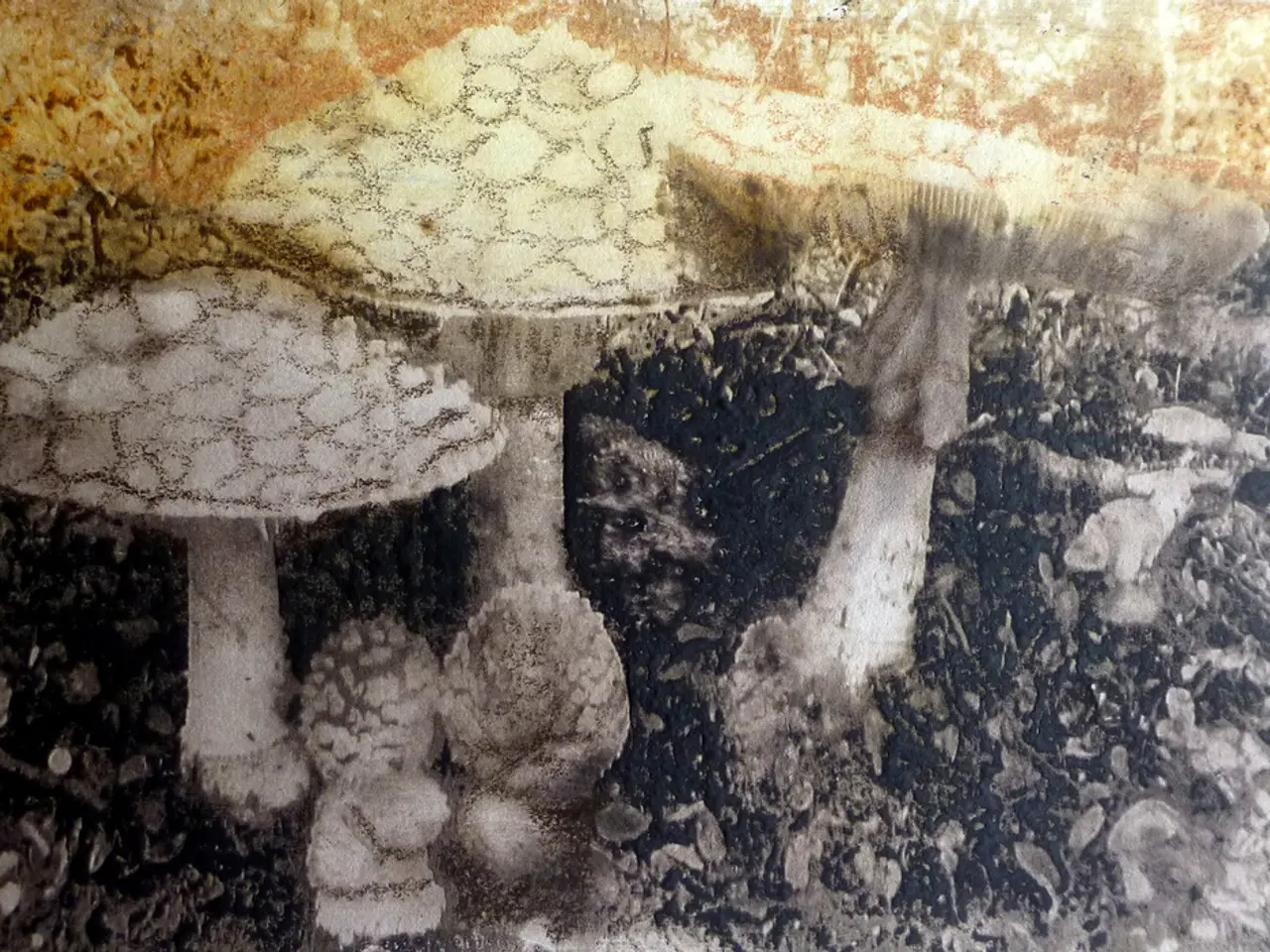US Forests Under Assault by Invasive Golden Oyster Mushrooms, Causing Destructive Havoc
The invasive golden oyster mushroom (Pleurotus citrinopileatus) has become a significant environmental concern in North America. Originally native to Asia, these mushrooms have established themselves in new environments, posing threats to native fungi and ecosystems.
The golden oyster mushroom aggressively colonizes dead wood, outcompeting native wood-decaying fungi. As a result, trees with golden oyster mushrooms house only about half the native fungal species diversity compared to trees without them. This loss of fungal biodiversity can disrupt ecosystem balance and reduce opportunities for discovering new pharmaceutical compounds from native fungi.
As decomposers of dead wood, golden oyster mushrooms could change the rate and manner in which wood decomposes. This may affect forest carbon dynamics by altering carbon emissions and storage, impacting broader climate-related processes.
The invasion of the golden oyster mushroom poses harm to ecosystem health, especially in already vulnerable forests stressed by climate change and habitat destruction. The disruption of native fungal communities can ripple through the ecosystem affecting other organisms reliant on those fungi.
Initially introduced through cultivation and mushroom grow kits, the golden oyster mushroom has rapidly spread in North America. Climate change is predicted to increase the range of suitable habitat for the mushroom, further accelerating its invasive spread and the associated ecological impacts.
Although the mushrooms are edible and were popular as food in their native range, harvesting them does not effectively control their spread, since the main fungal network (mycelium) remains underground and is not removed by picking fruiting bodies.
Aishwarya Veerabahu, a Ph.D. Candidate in Botany at the University of Wisconsin-Madison, suggests that mushroom growers, businesses, and foragers should consider refraining from using golden oyster mushroom grow kits to prevent any new introductions. Veerabahu also suggests that people who make a living selling these mushrooms should add a note that this species is invasive and should be cultivated indoors and not composted.
Increased awareness about responsible cultivation practices is important, as invasive species like golden oyster mushrooms can disrupt native biodiversity and potentially lead to the loss of beautiful, colorful, and weird fungi in forests. The gentle green mossy maze polypore, the elm oyster mushroom, and Nemania serpens are among the fungi pushed out of trees invaded by golden oyster mushrooms.
Fungi are sources of revolutionary medicines, including antibiotics like penicillin, cholesterol medication, and organ transplant stabilizers. The value of undiscovered, potentially useful chemicals can be lost when invasive species push others out.
Golden oyster mushrooms help break down dead wood and other plant material, cycle nutrients, sequester carbon in soil, and mediate carbon emissions from soil and wood. They also play a role in managing climate change and helping other organisms thrive. However, their invasive nature overshadows these benefits, making it crucial to address their impact on native fungi and ecosystems.
The golden oyster mushroom has become popular for being healthy, delicious, and easy to grow at home. It has been introduced into the wild in multiple U.S. states around the early 2010s. As it continues to spread, it is essential to take steps to mitigate its impact on native biodiversity and forest ecosystem health.
- Tech-savvy individuals can leverage your phones and social media platforms to spread awareness about the invasive golden oyster mushroom.
- The biology of the golden oyster mushroom, with its robust growth, makes it an ideal subject for further environmental-science research.
- Despite its cinematic appeal and potential culinary uses, the health implications for consuming golden oyster mushrooms remain unknown in North America.
- In the race to save native fungi, the field of ecology could use more funding from finance institutions and corporate business entities for targeted research and control methods.
- Climate change is not just a threat to animals and ecosystems but could exacerbate the invasive spread of the golden oyster mushroom, affecting the future balance of forest biodiversity.
- The evolution of the golden oyster mushroom from Asia to North America presents a compelling case study in the impact of human activities on biodiversity and science.
- As the gold rush for these mushrooms intensifies, foragers and businesses must be mindful of their role in spreading the invasive species into pristine habitats.
- The spread of the golden oyster mushroom, despite its contributions to carbon cycles, soil health, and plant nutrition, poses a threat to the evolutionarily unique fungi in North American forests.
- Threading the needle between the valuable ecological services of the golden oyster mushroom and its invasive nature, we must strive to find a balance in our relationship with this fascinating species in the context of science and the environment.




